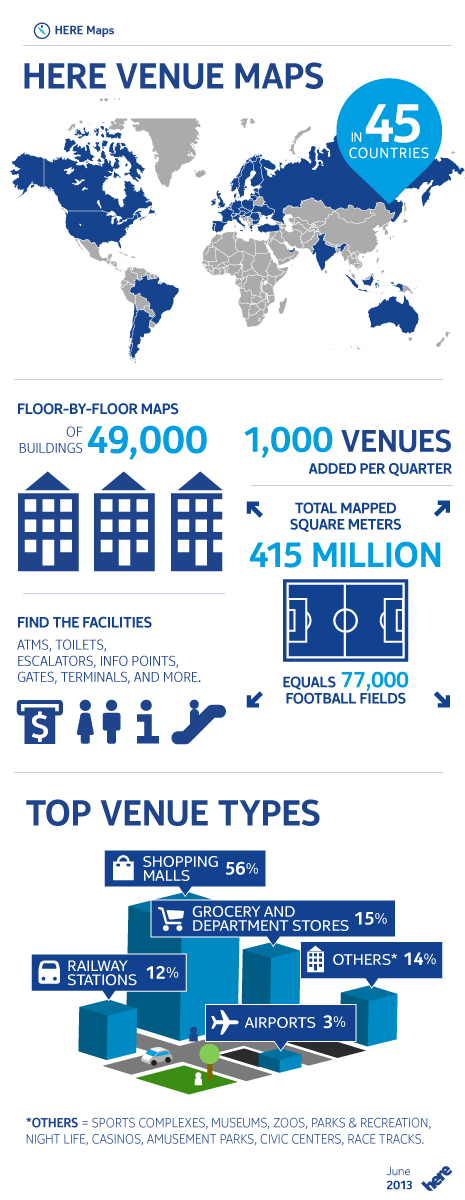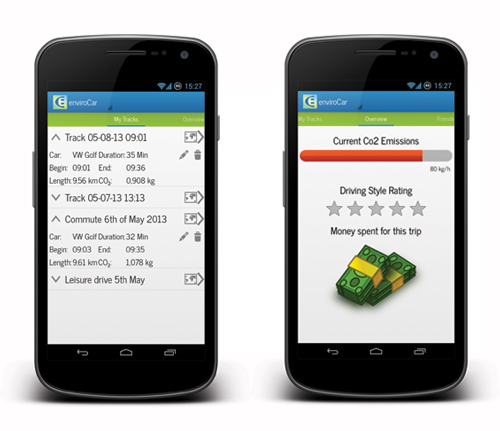
Is Nokia Building Competitive Advantage Over Google And Apple With Indoor LBS?
Last week Nokia announced to be offering indoor maps of 49,000 buildings in 45 countries. Is it much? Well… yes… Google features 10,000 buildings in 13 countries and Micello has 15,000 building plans in 30 countries. Bing adds to that around 5,000 Venue Maps in 59 countries. If it’s true than Nokia has more buildings than all the competitors together.
Why would they care?
Nokia is searching for diversification of revenue streams and map data is one of their most significant assets – after all they’ve acquired Navteq (one of the world biggest mapping data and solutions provider) for $8.1 bln back in 2007. Competition is not doing so well in the area of indoor mapping and Nokia is possibly building its competitive advantage as one the world’s largest mapping company. From the other hand Nokia is also working on adding indoor positioning to their HERE platform and with combined offer on indoor API and large number of building maps they might attract developers to build indoor location-based apps for Windows Phone 8 ecosystem and gain competitive advantage in that area.
Good idea?
Anyway it seems to be smart strategy as ‘indoor’ has a huge potential on monetization of location-based services especially in the field of location-based marketing. While ‘the outdoor’ LBS is already pretty straight forward and mature ‘the indoor’ is still in its infancy (maybe already a kindergarten;) and it generally lacks of common standards of positioning technologies, APIs, routing solutions and… openly available building maps. Although there are initiatives like In-location Alliance… who succeeds first, that one will build a significant competitive advantage over the competition… and Nokia is aware of that.
Below see attached Nokia’s infographic created for that occasion.
source: Nokia Blog









